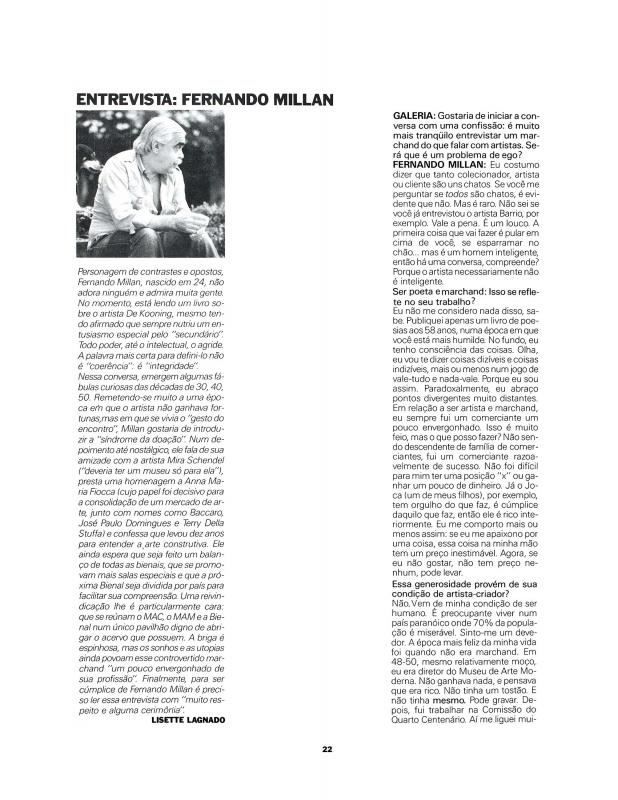Agnaldo Farias (b. 1955) provides an account of the Galeria Luisa Strina (and, naturally, of its owner), pointing out its connection to artists. One artist that exercised great influence on Strina was Wesley Duke Lee (1931–2010), the gallerist’s former husband and one of the founders of the Escola Brasil. Farias analyzes not only Lee’s work, but also that of other important artists clustered around the gallery. Thus, Farias provides a description of the São Paulo-based art dealer’s vision from the early days, starting in 1971, and after 1974, when the gallery really took shape with a group show of the Escola Brasil, as well as, later, several shows of Wesley Duke’s work. The members of the Escola Brasil, which came to be called the Grupo Rex, included José Resende (b. 1945), Carlos Alberto Fajardo (b. 1941), Frederico Nasser (b. 1945), and Luís Paulo Baravelli (b. 1942).
Agnaldo Farias is a freelance curator and a professor at the Faculdade de Arquitetura e Urbanismo da Universidade de São Paulo (FAU-USP). His first works of art criticism were published in the eighties and, since then, he has become a crucial figure in that field. In the nineties, he was the curator of the Museu de Arte Moderna do Rio de Janeiro (MAM-Río); he was the curator of the Brazilian representation at the 25th São Paulo Biennial and, later, he was the general curator of the exhibition Bienal 50 anos (2001). His books include The Piano Factory (on the work of painter Daniel Senise), Arte Brasileira Hoje (2002), and the monograph entitled Amelia Toledo: as naturezas do artifício (2004). He has organized outstanding exhibitions on the work of Nelson Leirner, one of the members of the Grupo Rex.
In addition to the text by Farias, the catalogue to the show at MASP celebrating two decades of Luisa Strina’s work as an art dealer contains an interview with her, reproductions of the works on exhibit, and a timeline of shows held at the gallery from 1974 to 1994 on the basis of the gallery’s databank.
Other Brazilian historians that have discussed the role of the art dealer in Brazil include Rodrigo Naves (see “Gosto de arte. É para ela que trabalho,” an interview with art dealer Raquel Arnaud, ICAA digital archive doc. no. 1111218); Lisette Lagnado (see “Entrevista: Thomas Cohn” and “Entrevista: Fernando Millan,” doc. no. 1111322 and doc. no. 1111293 respectively); and Sheila Leirner (see her “Mary Dritschel I” and “Mary Dritschel II,” doc. no. 1111361 and doc. no. 1111362 respectively).




